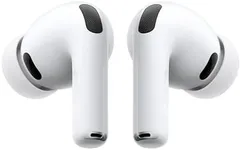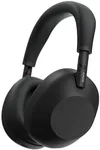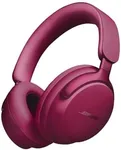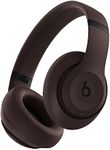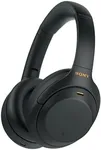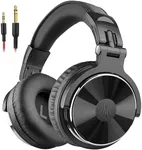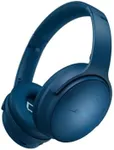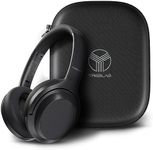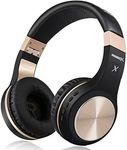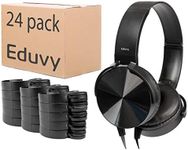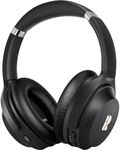Buying Guide for the Best Headphones
Choosing the right headphones can greatly improve your listening experience, whether you're enjoying music, podcasts, gaming, or taking calls. With many different types and features available, it's helpful to understand what matters most for your intended use. Think about where you'll use your headphones the most—at home, commuting, working out, or in the office. This will help you prioritize the features and specs that are most important for your comfort and enjoyment.Type (Over-ear, On-ear, In-ear)This refers to the design and how the headphones fit on or in your ears. Over-ear headphones have large ear cups that cover your ears entirely and often provide the best sound quality and noise isolation, making them great for home or studio use. On-ear headphones rest on top of your ears and can be more compact for travel, but may not block as much noise. In-ear headphones (earbuds) fit directly into your ear canal, are lightweight and highly portable—ideal for active use, like running or commuting. Choosing between these types depends on your preferences for comfort, portability, and where you'll use them most.
Sound Quality (Frequency Response, Drivers)Sound quality is what your headphones actually sound like and is influenced by technical details such as frequency response and driver size. Frequency response tells you the range of sounds the headphones can reproduce; a wider range means more detailed highs and deeper lows. Driver size can impact how much sound is produced, with larger drivers often providing better bass. For a casual listener, most modern headphones will sound good, but if you're an audiophile or enjoy high-fidelity music, look for headphones with a wide frequency range and quality drivers.
Noise CancellationThis feature reduces unwanted external sounds so you can focus on what you're listening to. Active noise cancellation (ANC) electronically cancels out background noise, while passive noise isolation relies on the headphone's physical design to block sound. ANC is great for travelers or noisy environments, while passive isolation can be sufficient for quieter places. Consider your typical listening environment when deciding how important noise cancellation is for your headphones.
Wireless vs. WiredWireless headphones connect to your devices via Bluetooth, offering the convenience of no cables, especially useful for commuting or exercising. Wired headphones rely on a physical cable and can provide better sound quality without worrying about battery life, which is ideal for desk work or high-quality audio needs. Choose based on how often you want to move around without restriction or prioritize the best audio consistency.
Battery LifeFor wireless headphones, battery life determines how long you can use them between charges. Headphones can range from a few hours to over a day of continuous use. If you plan long listening sessions or often forget to recharge, look for headphones with longer battery life or quick-charging features. If you use headphones only briefly or near a charger, shorter battery life may not be a problem.
Comfort and FitHow comfortable the headphones feel during long periods of use is important, especially if you wear them all day or during workouts. Features like adjustable headbands, padded ear cups, or customizable ear tips make a big difference. Try to pick headphones with comfort features that match your intended use: lightweight options for sports, padding for all-day wear, or sweat-resistant materials for exercise.
Microphone and ControlsIf you plan to use your headphones for calls or voice commands, having a quality built-in microphone and easily accessible controls is crucial. Some headphones have on-cable or on-device buttons to change volume, skip tracks, or answer calls. Make sure the controls and microphone quality match your needs, especially if you anticipate frequent calls or interactions without taking your device out.
Durability and Build QualityDurability refers to how well the headphones can withstand daily use, including drops, moisture, and general wear. Look for features like reinforced cables, water resistance, or sturdy materials if you plan to use your headphones in tough conditions. If you’re mostly using them at a desk or at home, this may be less of a priority, but for portable or gym use, build quality becomes much more important.


